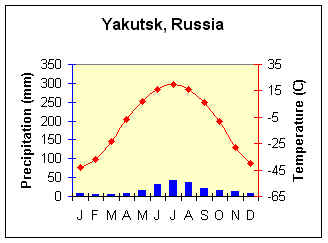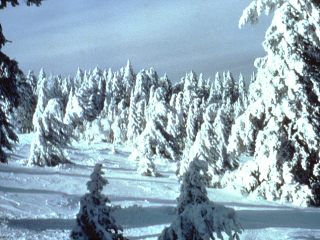Subarctic Climate (Dfc, Dfd)

Latitude/Longitude = 62.1o N; 129.49o W |
Snow covered coniferous forest, typical natural vegetation of the Subarctic climate. Conical shape of tree helps capture insolation at low angles. Photo credit: T. Smylie, U. S. Fish and Wildlife
Service. |
Geographical Distribution
|
Characteristics
Question for Thought
|
Back to Interactive Climate Map

This work is licensed under a Creative Commons Attribution-ShareAlike 4.0 International License..
